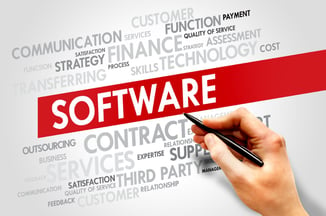In last week’s post, we discussed the features and benefits of hosted software solutions, with mentions of software-as-a-service as part of the category. So, what exactly is software-as-a-service?
Software-as-a-service (or SaaS) is a model that delivers applications over the Internet – as a service. SaaS is also commonly referred to as "on-demand software,” since applications reside on the provider’s servers and are accessed via the Internet. The SaaS provider is responsible for managing security, availability, and the performance of the application.
Similar to hosted solutions, there are a variety of benefits to using software-as-a-service. Below are just a few:
Quick Deployment and Accessibility . . . But Not a Speedy “Go Live”
Unlike traditional software that can take months to deploy, SaaS solutions only require an internet connection to access, providing users with quick and easy access on a variety of desktop and mobile devices. (Taking an SaaS solution “live,” however, still requires a needs analysis, training, testing, conversion, and other traditional project tasks.)
Lower Costs . . . Maybe
With no software or hardware to purchase, install, or maintain, the SaaS solution decreases the initial amount of financial strain on your IT budget. Subscription fees eliminate the need to purchase software licenses outright, making it easier to budget for associated monthly costs. Long term cost, however, when compared to a traditional package deployment, requires a financial evaluation over several years.
Upgrades . . . But Not on Your Schedule
SaaS providers are responsible for managing software updates and upgrades for you, eliminating the need to install or download patches -- that is, upgrades occur whether you want them or not.
Integration Challenges and Scalability
Many SaaS applications are not designed to support customizations in line with how you do business. SaaS vendors do create APIs to allow connections, but this may take you down the path of having a unique install, which runs against the grain of the SaaS model.
You can easily scale SaaS applications to meet your growing business demands simply by adjusting your subscription. There is no need to invest in server capacity or software licenses, as the providers manage them.
Increased Adoption Rates
SaaS applications tend to have lower learning curves and higher adoption rates because they're accessible from common web browsers. Users get into SaaS very easily, but an SaaS solution is only effective if you develop and execute good business processes.
Are you in the market for a new system? Does the SaaS model seem like a good fit? The experts at Acuity would love to help your organization implement a solution that meets your business needs. Contact us today for more information.




